|
|
Search

|
  Home Home
|
  Surname Surname
|
  First Name First Name
|
Popular Products

|
  Coat of Arms Coat of Arms
|
  Clan Badges Clan Badges
|
  Books & Gifts Books & Gifts
|
  Celtic Jewelry Celtic Jewelry
|
  Black Shirts Black Shirts
|
  CD Music CD Music
|
  Download Download
|
 Design Gallery
Design Gallery

|
  Irish Irish
|
  Flags Flags
|
  Celtic Celtic
|
  Tartans Tartans
|
  Scottish Scottish
|
  Claddagh Claddagh
|
  Surnames Surnames
|
  Highlander Highlander
|
  Celtic Radio Celtic Radio
|
Research

|
  History History
|
  Country Country
|
  Families Families
|
|
|
|
|
 Our store includes not only customized products, but select clothing items from brand name house hold names like Champion, Izod, WeatherProof, Adidas and more. For those in rural areas or that are home bound, we offer a separate clothing store containing thousands of items that can be purchased quickly with expedited service and shipping (hard to find larger sizes are available). We offer a wide selection of popular Celtic and Medieval books, Jewelry, Gifts, Accessories (such as caps and designer bags), Mouse Pads, Coat of Arms Plaques, Surname History PDF files, Bumper Stickers and Coat of Arms Downloads.
|
|
Our Heraldry Database has thousands of Family histories to search. Visit Now!
Murray

Coat of Arms
The Murrays trace their heritage back to the twelfth century and take their name from the great province of Moray, once a local kingdom. It was during this time that the Flemish lords crossed the North Sea and established themselves in the Scottish realm. Among them was Freskin, son of Ollec. Either Freskin or his son William intermarried with the ancient royal house of Moray. The senior line of t.....
|
|
|
Heraldry Database: Maclean
MacLean

|
|
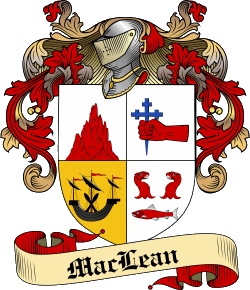

Surname: MacLean
Branch: MacLean
Origins: Scottish
More Info: Scotland
|
|
Background: The clan Gillean of the Macleans is a clan included by Mr Skene under the head of Moray. The origin of the clan has been much disputed; according to Buchanan and other authorities it is of Norman or Italian origin, descended from the Fitzgeralds of Ireland. "Speed and other English historians derive the genealogy of the Fitzgeralds from Seignior Giralde, a principal officer under William the Conqueror". Their progenitor, however, according to Celtic tradition, was one Gillean or Gill-eoin, a name signifying the young man, or the servant or follower of John, who lived so early as the beginning of the 5th century. He was called Gillean-na-Tuardhe, i.e. Gillean with the axe, from the dexterous manner in which he wielded that weapoin in battle, and his descendants bear a battle-axe in their crest. According to a history of the clan Maclean published in 1838 by "a Sennachie", the clan is traced up to Fergus I of Scotland, and from him back to an Aonghus Turmhi Teamhrach, "an ancient monarch of Ireland". As to which of these account of the origin of the clan is correct, we shall no pretend to decide. The clan can have no reason to be ashamed of either.
The Macleans have been located in Mull since the 14th century. According to Mr Skene, they appear originally to have belonged to Moray. He says, - "The two oldest genealogyies of the Macleans, of which one is the production of the Beatons, who were hereditary sennachies of the family, concur in deriving the clan Gille-eon from the same race from whom the clans belonging to the great Moray tribe are brought by the MS of 1450. Of this clan the oldest seat seems to have been the district of Lorn, as they first appear in subjection to the Lords of the Lorn; and their situation being thus between the Camerons and Macnachtans, who were undisputed branches of the Moray tribe, there can be little doubt that the Macleans belonged to that tribe also. As their oldest seat was thus in Argyle, while they are unquestionably a part of the tribe of Moray, we may infer that they were one of those clans transplanted from North Moray by Malcolm IV, and it is not unlikely that Glen Urquhart was their original residence, as that district is said to have been in the possession of the Macleans when the Bissets came in".
|
 Motto: Motto: Virtue mine honour, Virtue is my honour. Arms: Quarterly, 1st, Argent, a rock Gules; 2nd, Argent, a dexter hand fesswise couped Gules holding a cross crosslet fitchee in pale Azure; 3rd, Or, a lymphad, oars in saltire, sails furled Sable, flagged Gules; 4th, Argent, a salmon naiant Proper, in chief two eagles' heads erased respectant Gules'. Crest: A tower embattled Argent. Supporters: Dexter, a seal Proper; sinister, an ostrich with a horse-shoe in its beak Proper. Badge: A tower with battlements. Plant: Holly, Crowberry or Blaeberry. View the Heraldry Dictionary for help.

This name in Gaelic is rendered as ‘Mac Gille Eathain’, ‘son of the servant of St John’. It has also been suggested that there is an alternative derivation from ‘leathan’, meaning ‘broad’ or ‘broad-shouldered’. However they spell their name, the Macleans descend from Gilleathain na Tuaigh, Gillean of the Battle-axe. He may well have been the brother of Fergus Macerc, descended from the royal house of Lorn. Gillean fought at the Battle of Largs when the army of the Norwegian King Haakon was defeated, ending the Norse hegemony over the Hebrides in 1263. His son signed the Ragman Roll as Gillemoir Macilyn in 1296, swearing fealty to Edward I of England. Gillemoir’s great-grandson, Iain Dhu Maclean, settled in Mull. Of his sons, Lachlan Lubanach was progenitor of the Macleans of Duart and Eachainn Reaganach (Hector) founded the Maclaines of Lochbuie. The other major cadets, the Macleans of Ardgour and Coll, descend from Lachlan. The Macleans of Duart married into the family of John of Islay, the first Lord of the Isles, and it was a match from which they gained great power and prestige. By the end of the fifteenth century, the Macleans owned most of Mull, Tiree, Islay, Jura and Knapdale, with Morvern in Argyllshire and Lochaber.
The politics of the isles were always turbulent, but the Macleans were particularly at odds with the Mackinnons. Lachlan Lubanach’s son, Red Hector of the Battles, was a renowned warrior who fought for the Lord of the Isles at Harlaw in 1411. Red Hector and Sir Alexander Irvine of Drum met in single combat. After the duel, in which neither was dishonoured, they both died of their wounds. James IV was the first Scottish king seriously to attempt to bring the isles under royal control, and the pragmatic Macleans supported him. Lachlan of Duart was killed with the king at Flodden in 1513.
The rising power of the Campbells in the late sixteenth century brought them into opposition with the Macleans. Inter marriage was a traditional way to avoid unnecessary feuds, and several Campbell marriages were arranged. One went badly wrong when the chief, Lachlan Maclean, married Lady Elizabeth Campbell, daughter of the second Earl of Argyll. The match was not a happy one, and Maclean decided upon drastic action: he marooned her upon a rock, leaving her to drown. She was rescued by passing fishermen who took her to her kin. Maclean was run through in Edinburgh by his wife’s brother in 1523.
The Campbells and the Macleans were at least united in their Protestant faith and their dislike of the Macdonalds. Sir Lachlan Mor Maclean harried the Macdonalds of Islay, causing such carnage that, in 1594, he and the Macdonald chief were declared outlaws by the Privy Council. Lachlan redeemed himself when he fought for the king at the Battle of Glenlivet in 1594. He was killed fighting on Islay in August 1598, whereupon his sons took revenge in the form of a massacre which is said to have lasted for three days.
Sir Lachlan Maclean was created a Baronet of Nova Scotia on 3 September 1631. He was passionately devoted to Charles I and called his clan out to join Montrose, who had been appointed the king’s captain general. He died in 1649, after which his son, Sir Hector, took up the cause, losing his life at the Battle of Inverkeithing in 1651. This left Hector’s four-year-old-brother, Alan, as the heir. Sir Alan died in 1674, leaving another child to inherit the chiefship. The estates were by now heavily in debt. By 1679 the Campbells had gained possession of Duart and most of the Maclean estates. When the Stuarts once again called for aid against their rebellious subjects, the Maclean chief hurried to their standard. Sir John, the fifth Baronet, fought for James VII at Killiecrankie in 1689. The Campbells had little difficulty in obtaining the rest of the Maclean estates as a reward for their loyalty to the new régime.
The Macleans were out in the rising of 1715, and Sir Hector Maclean was given a Jacobite peerage in 1716. He was exiled in France where he founded, and was the first Grand Master of the Grand Lodge of Freemasons in Paris. Sir Hector returned to Edinburgh in 1745 to pave the way for the rising of that year, but he was arrested and was imprisoned in the Tower of London until 1747. He died at Rome in 1750. The clan was led throughout the Forty-five by Maclean of Drimmin, who was killed in the Highland charge at Culloden. Duart Castle fell into ruins, but the chiefs, seeing the Jacobite cause was lost, served their country with distinction. All the chiefs from that time have been soldiers. The eighth Baronet achieved the rank of general, while Sir Fitzroy, the tenth Baronet, fought at the Battle of Sebastopol of 1854–55. Duart was reclaimed by the chiefs in 1911 and has been restored as their seat. The father of the present chief was Chief Scout of the Commonwealth and Lord Chamberlain to HM The Queen. He was created a life peer as Lord Maclean of Duart.
Name Variations: Beath, Beaton, Bey, Black, Clanachan, Garvie, Gillan, Gilland, Gillian, Gillon, Gilzean, Huie, Lean, MacBay, MacBeath, MacBeth, MacBey, MacBheath, MacClane, MacClean, MacCormick, MacFadyen, MacFadzean, MacFayden, MacFetridge, MacGillivray, MacGilvra, MacILdowie, MacIlduff, MacIlduy, MacIlvora, MacLaine, MacLean, MacLergain, MacLergan, MacPhadden, MacRankin, MacVay, MacVeagh, MacVey, Padon, Paton, Patten, Patton, Peden, Rankin, Rankine.
References:One or more of the following publications has been referenced for this article.The General Armory; Sir Bernard Burke - 1842.
A Handbook of Mottoes; C.N. Elvin - 1860.
Scottish Clans and Tartans; Neil Grant - 2000.
Scottish Clan and Family Encyclopedia; George Way of Plean and Romilly Squire - 1994.
Scottish Clans and Tartans; Ian Grimble - 1973.
World Tartans; Iain Zaczek - 2001.
Clans and Families of Scotland; Alexander Fulton - 1991.

|
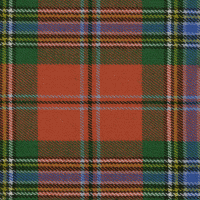
Ancient | 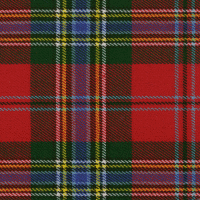
Modern | 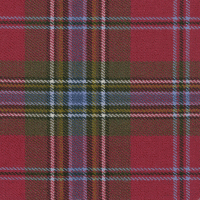
Weathered | 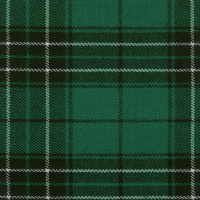
Ancient Hunting | 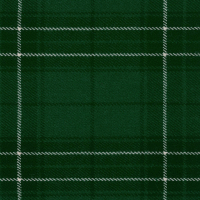
Modern Hunting |

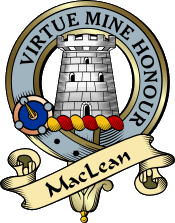


Sign-up for a Founders account and receive personalized
family heraldry service and much more!

Want to know more?
Click the Heart!
|
|
|



